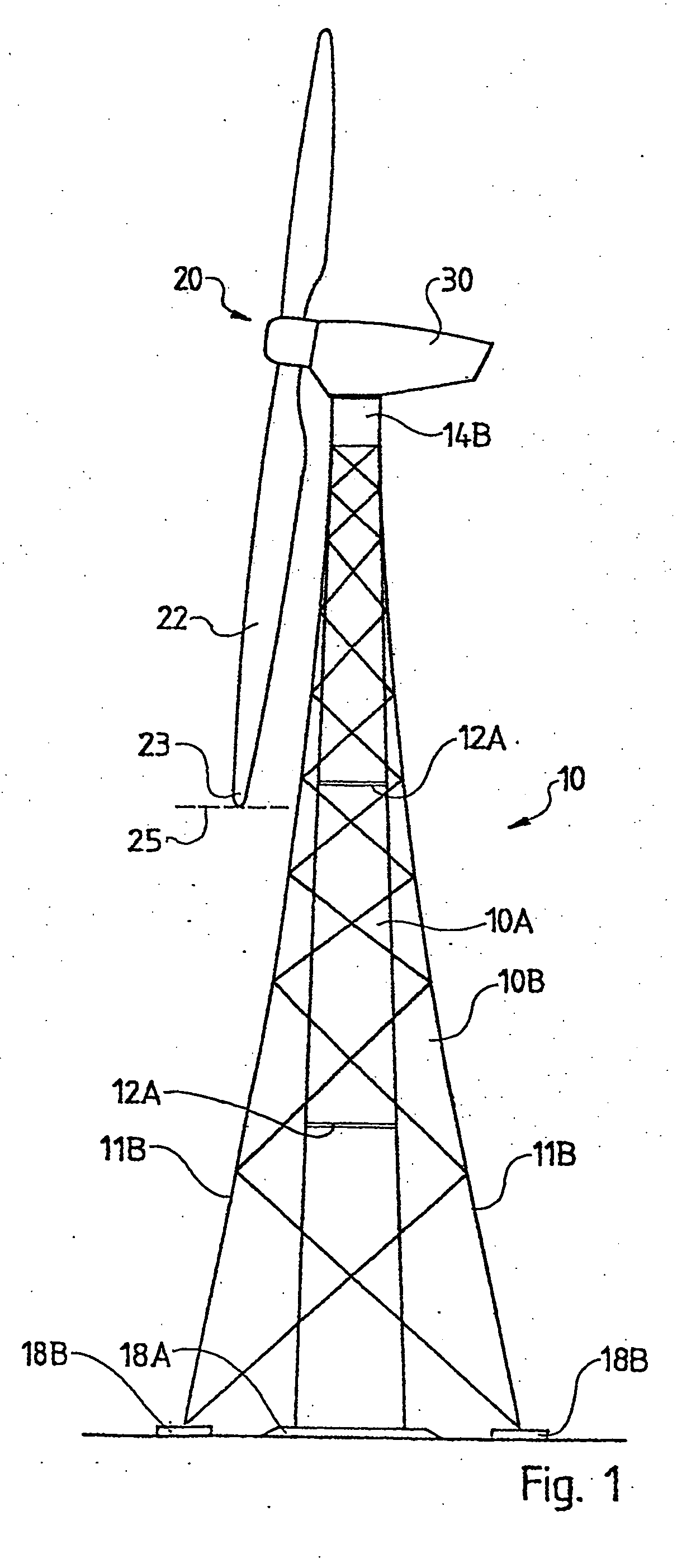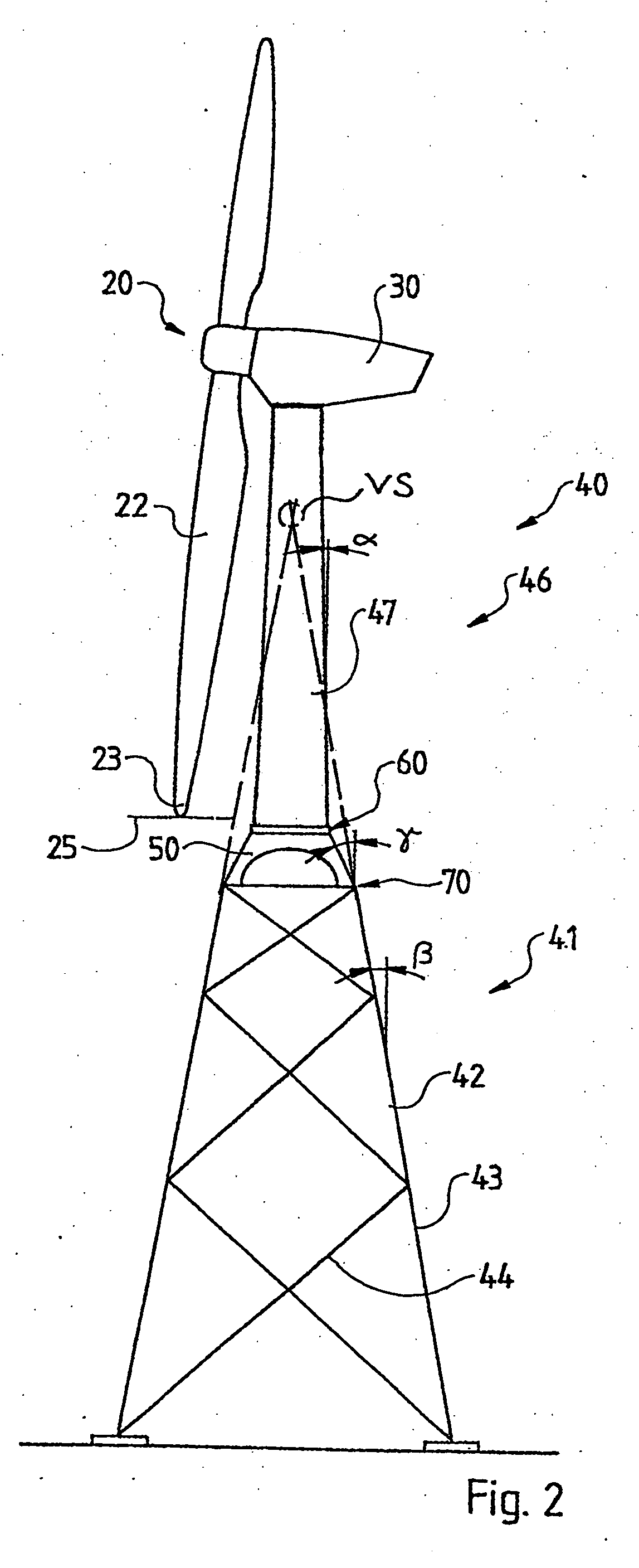Tower for a wind power station
a technology for wind power stations and towers, which is applied in the direction of mechanical equipment, machines/engines, electric generator control, etc., can solve the problems of entanglement of the tower base, the difficulty of transporting towers of diameters larger than 4.3 m, and the critical engineering limitation of the required tower diameter at the tower bas
- Summary
- Abstract
- Description
- Claims
- Application Information
AI Technical Summary
Benefits of technology
Problems solved by technology
Method used
Image
Examples
Embodiment Construction
[0070]FIG. 1 shows a wind-driven power-plant of the state of the art where the supporting tower 10 is made up of two superposed tower variations, namely a tubular tower 10A and a lattice tower 10B. The tower 10 bears an equipment nacelle 30 which is rotatable about the vertical tower axis and which supports a rotor 20 bearing at least one rotor blade 22 having a blade tip 23 and being rotatable about a substantially horizontal axis. This view shows a three-blade rotor, the horizontal plane of the rotor blade tip 23 in its lowermost position being denoted by a dashed line 25.
[0071] Besides the rotor bearing, the equipment nacelle 30 conventionally also contains a generator, a gear unit where called for, a wind tracking system, various electric components and further accessory systems. Such parts are omitted for the sake of clarity.
[0072] Because of transportation, the tubular tower 10A is fitted with several flange connections 12A. In the state of the art, these flange connections ...
PUM
 Login to View More
Login to View More Abstract
Description
Claims
Application Information
 Login to View More
Login to View More - R&D
- Intellectual Property
- Life Sciences
- Materials
- Tech Scout
- Unparalleled Data Quality
- Higher Quality Content
- 60% Fewer Hallucinations
Browse by: Latest US Patents, China's latest patents, Technical Efficacy Thesaurus, Application Domain, Technology Topic, Popular Technical Reports.
© 2025 PatSnap. All rights reserved.Legal|Privacy policy|Modern Slavery Act Transparency Statement|Sitemap|About US| Contact US: help@patsnap.com



